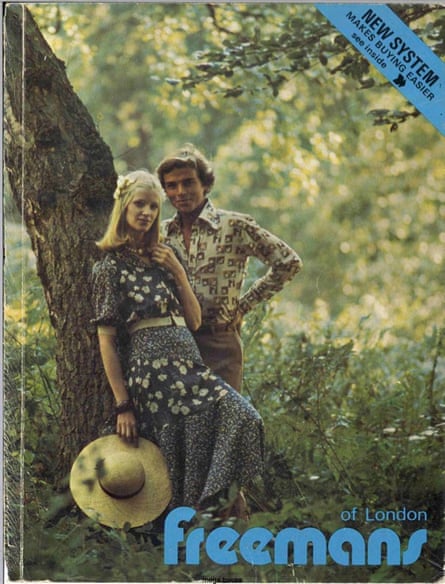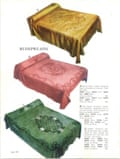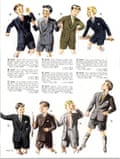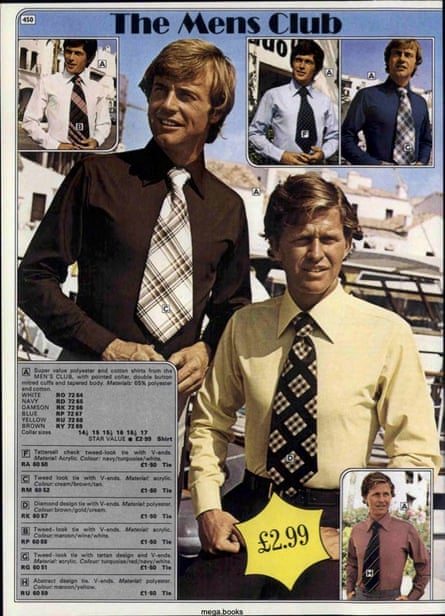
For more than a century, the Freemans catalogue was the shopping bible to which generations of Britons turned to buy next big thing, from the first off-the-peg fashions to the televisions and fridges we take for granted in our homes today.
But like the ever changing roster of products sold through the once tome-like catalogue, the owner of Freemans has decided that it too has passed its sell-by date and axed the catalogue in order to focus on its website.
The decision follows other big catalogue brands as the inexorable rise of online shopping prompts consumers to switch from flicking through encyclopedia-like shopping guides to scrolling websites on phones and tablets.
 The 1975 Freemans spring/summer catalogue cover. Photograph: Freemans
The 1975 Freemans spring/summer catalogue cover. Photograph: Freemans
Argos, one of the biggest names in catalogue retailing, called time on the “book of dreams” back in 2020 as its shoppers increasingly moved online.
Ann Steer, the Freemans chief executive, said the catalogue “was a national institution and one of the most successful retail sales tools the UK has ever seen”.
“It was the UK’s biggest and the best store catalogues and has served generations of families,” she said. “However, we need to move with the times, in response to how customers are shopping these days.”
Steer insisted it was not the end of the road for Freemans which is being revamped after being neglected by longstanding owner, the sprawling German e-commerce firm Otto Group. Freemans was outperforming the market with sales up by 13% in the first six months of 2023, she said, with an expanding customer base once again.
Ditching the catalogue would let it become a “digital department store”, added Steer. The catalogue could only carry a few thousand items whereas the Freemans website offered a range of 55,000 products.
skip past newsletter promotion
Sign up to Business Today
Free daily newsletter
Get set for the working day – we’ll point you to all the business news and analysis you need every morning
Enter your email address Enter your email address Sign upPrivacy Notice: Newsletters may contain info about charities, online ads, and content funded by outside parties. For more information see our Privacy Policy. We use Google reCaptcha to protect our website and the Google Privacy Policy and Terms of Service apply.
after newsletter promotion
 Move over Ikea: bedspreads on sale in the 1955 Freemans spring/summer catalogue. Photograph: Freemans
Move over Ikea: bedspreads on sale in the 1955 Freemans spring/summer catalogue. Photograph: Freemans
But the move calls time on a stalwart of the British retail scene with well over 1bn copies of the catalogue printed since its launch in 1905. Along the way the pages featured many now famous faces including Lulu, Yasmin Le Bon and Denise Van Outen.
The household name claims to have had a hand in introducing – and crucially making products affordable, by allowing customers to spread the cost – everything from three-piece suites to televisions and white goods.
 How boys used to dress. A page from the 1955 catalogue Photograph: Freemans
How boys used to dress. A page from the 1955 catalogue Photograph: Freemans
Formed in 1905, Freemans is named after one of the founding partners. The catalogue was originally black and white but in the 1920s it would become one of the first to introduce colour photographs.
The brand came to dominate the mail order landscape in the 1930s thanks to its network of 30,000 “agents”, the majority of whom were men as, at the time, women could not negotiate credit agreements.
 Freemans spring/summer offerings from 1975. Photograph: Freemans
Freemans spring/summer offerings from 1975. Photograph: Freemans
It continued to thrive over the decades and in the 1960s women took over the agents role. This gave rise to the term “catalogue lady”, in essence someone who came to your house, collected orders and was paid for the goods in cash weekly.
It will live on as a piece of retail history with copies donated to the British Museum, Cambridge University Library and Oxford University’s Bodleian Library.
